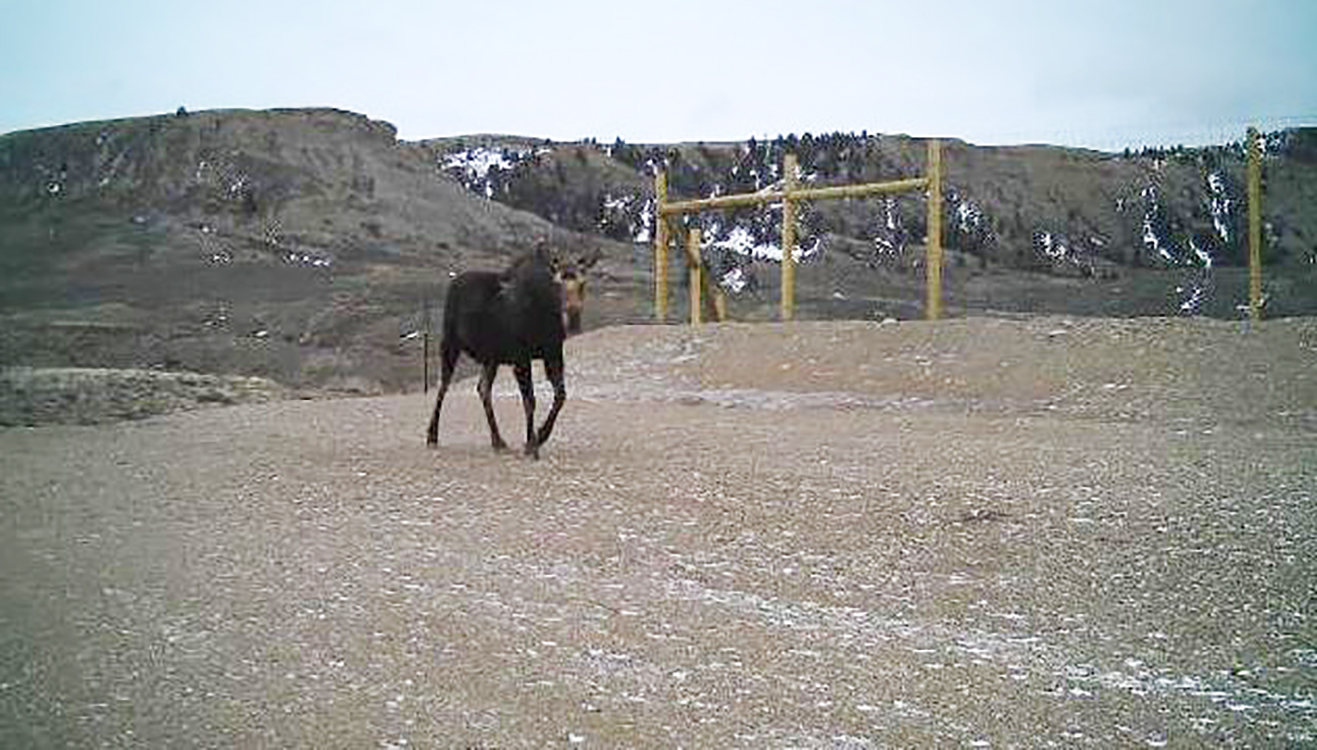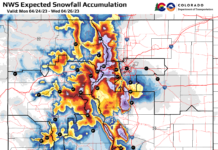The Highway 9 Wildlife Safety Improvement Project is in its final stages of construction and is expected to be finalized in November of this year. The 11 mile multi-million dollar project is a unique alliance between the private sector and governmental agencies and has already been successful in preventing animal collisions with wildlife.
Wildlife Update
Michelle Cowardin, Colorado Parks and Wildlife Biologist reported that roadkill deaths had decreased drastically with the completion of the first six miles of construction. Over 100 people attended the Highway 9 Wildlife and Safety Improvement Project meeting last week to listen to the successes of the project and voice concerns from last summer.
Cowardin reported that there were 40 deer hit and killed this winter along Highway 9. Thirty-seven of those deer were south of the fenced area within Phase II, and only 3 deer were killed within the 6-miles of completed fence and crossing structures.
“These results were really exciting for me. I never thought we would see this the first year,” said Cowardin.
The reduction of wildlife collisions is being attributed to the eight foot linear fence that parallels the Highway 9 and the use of wildlife crossings, three underpasses and an overpass.
With the use of photographs, Colorado Parks and Wildlife has documented the use of the passes and have found that the deer population is very adaptable and began to use the passes almost immediately.
Cowardin said that during the preconstruction stages the overpass location near the entrance of Blue Valley Ranch was a location of a natural deer crossing and attributes much of its success to its location.
The overpass is primarily used by mule deer, but a fox and coyote have also been documented crossing the structure. Recently, the first moose was recorded using the overpass.
The underpasses have also seen much use almost exclusively by deer. There has been at least one elk that has used the northern underpass.
Deer that manage to find their way inside of the fenced area have been found to use the escape ramps installed along the fence line. The ramps have an incline and end in a six foot leap for the deer. The height is low enough to encourage the deer to jump, but is high enough to dissuade them from jumping back onto the highway. The ramps are placed strategically to allow the deer to jump into an area that is safe for them and optimally on public land. The effectiveness of the ramps is being studied and different models and grades are being analyzed. Cowardin commented that the fence in the middle of the ramp is supposed to act as a guide for deer, but may act as a deterrent. Cowardin also noted that deer who do get on the highway gravitate to lower areas.
“We are trying to help CDOT develop the best design and…we have worked through some of these issues,” Cowardin said of their studies.
For entrances, closing gates were cited as one of the most effective tools for keeping deer from finding their way onto the highway. Many entrances had deer guards measuring 14.5’ long, but the deer would cross the guards or use the small strip set-up across the deer guard for pedestrian use.
When the gate was closed at the BLM road north of the overpass, Cowardin was wary that many would not keep it closes, but found it was used responsibly and that people closed it consistently.
Last week, in the short summary of the meeting, it was incorrectly reported that 47 deer were killed within the fenced on the highway last year. It should have read 19
Construction Update
Kirkland Construction, the contractor for the project, was lauded for its aggressive timetable of completing six miles in five months. Connie Smith of the Rusty Spurr Ranch shared her appreciation for CDOT and Kirkland at the Highway 9 Wildlife and Safety Improvements Project meeting last week and felt the impact to their business was minimal.
The final five miles of the project is expected to be easier than last summer’s construction. According to the Colorado Department of Transportation (CDOT) resident engineer, Grant Anderson, the final phase of the project will consist of one overpass and only two underpass structures. Last summer three underpasses were constructed and one overpass near the entrance of Blue Valley Ranch. This will minimize the shoo-flies used to detour around the construction of the passes and traffic concerns should lesson. In addition, the project will be one mile shorter, and the pipe culverts will be shallower than the ones installed last summer. There will also be no concrete culverts installed this summer.
Anderson reported that alternate route posting would be similar to last year, but paving of Berthoud would be complete. Many travelers may take this alternate route into Grand County and bypass the construction.
Delays are expected to be similar to last year and the goal is to keep delays to less than 45 minutes. This year there will not be designated construction times and construction hours will be five days a week, daylight to daylight. Construction will be opposite this year and construction will begin on the south end of the project and progress to the north.
Leonard Read, area manager for Kirkland Construction, reported that last summer 300,000 gallons of water was pumped from the Colorado River every month for dust control. This summer Kirkland Construction would be pumping water from the Blue River and would have a pond near the shooting range and one at the other end.
Both CDOT and Kirkland acknowledged that dust control would be a focus for this year, but noted the limitations of mag chloride, the expense, and the timing of using it effectively. Other options also had limitations. One member of the audience suggested that soybean oil could be used. John Stites, a consultant office engineer from Rocksol Consulting Group noted that deer are often attracted to soybean oil and use it as a food source which would then lead deer to the road which was trying to be prevented.
Read also better road maintenance as individuals cited concerns about pot holes, ruts, and broken windshields resulting from gravel. Read cited better training for equipment operators; however, he did warn drivers that the haul trucks should “never be challenged in the construction zone – they are big, heavy, and sight-limited.” He also hoped that this construction phase would be less rocky than the previous phase, but made no promises.
Many members of the audience wanted more presence of patrol cars and expressed a concern for safety in the construction zone from other drivers who passed and did not obey speed limits. “It is a free for all,” one audience member explained.
It is also harder to control dust when speed limits are not followed. “Dust increases exponentially with increased speeds,” explained Read.
Commissioner Kris Manguso explained that Sheriff Brett Schroetlin was receptive to doing more patrolling on the section of Highway 9 and that beginning in June Grand County would begin receiving the money from tickets written by the Grand County Sheriff’s office. Previously, the money went to the state.
Anderson commented that there is currently tax bills for transportation in legislation and if they were to pass. There could be more money for projects like these.









